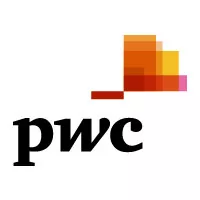In brief
On 27 February 2020, the EU Council published a new Directive (2020/262) laying down the general rules for excise duties. The Directive will replace the old excise Directive 2008/118 and will consolidate a number of changes made to the old Directive in the past years.
The Directive will also introduce some new features relevant to the excise practice, most notably the introduction of an e-document for transportation of excise products for which the excise duties are paid in the country of dispatch and the Certified Consignor and Certified Consignee for that purpose as well as harmonised rules for losses during movement of excise goods under excise duties suspension between Member States.
Below we highlight the changes regarding the certified consignee/consignor and losses during the transportation of goods.
In detail
Certified Consignee / Consignor
Excise goods can be transported under suspension of excise duties, or movement to other EU countries may be for excise products for which the excise duties have been paid in the country of dispatch. Under the old Directive the shipment under excise duties suspension was covered by an e-AD. The consignor of the goods sends a notification to the authorities (via EMCS) at the start of the transportation and an e-AD is issued. Upon arrival, the consignee sends a notification via EMCS that the goods have arrived and the e-AD is cleared (closed).
For goods for which the excise duties have been paid in the Member State of dispatch the EMCS could not be used. Instead, a paper document (Simplified accompanying document: SAD) needed to accompany the goods as proof that the excise duties have been paid in the country of dispatch.
Furthermore, the excise authorities in the country of arrival should be informed about the incoming shipment Upon arrival in Member State B, the excise authorities used the SAD for declaring that the goods have indeed arrived in Member State B, which allows the consignor to get a refund of the excise duties paid in Member State A.
Introduction of the concept certified consignee/consignor
Under the new Excise Directive, the transportation of goods for which the excise duties have been paid will also be subject to an EMCS notification. For this reason, the Directive introduces the concept of the Certified Consignor (the sender of the goods) and Certified Consignee (the receiver of the goods). Before shipment of the goods, the Certified Consignee needs to set a guarantee for the excise duties he envisages to receive and is required to pay the due excise duties upon arrival of the movement of the goods.
The Certified Consignor will then submit a notification via EMCS ('electronic simplified administrative document': e-SAD). As is the case with transportation under suspension of excise duties, this will generate a movement reference number (MRN) that the transporter of the goods should be able to present to the customs authorities upon request during the movement. The closure of the e-SAD will allow the Certified Consignor to request the refund of the excise duties paid in the country of dispatch. Authorised warehouse keepers and registered consignors/consignees may act as a Certified Consignor/Consignee. For any other person/company there is the possibility to obtain a temporary Certification for a specific shipment.
Harmonised rules for losses during transportation between Member States
The new Directive also contains harmonised rules regarding losses that occur during the movement of excise goods between Member States under suspension of excise duties. While transporting excise goods, certain small partial losses may occur due to natural circumstances (e.g. evaporation). For these small losses, no excise duties are due. Currently, Member States set their own threshold for the losses that are allowed to occur. In case the amount of losses surpasses the threshold, excise duties will be due on the losses.
The new Directive allows the EU Commission to set the thresholds for partial (transportation) losses during the movement between Member States. The EU Commission has not yet published the thresholds. Therefore, the national thresholds still apply for cross border movement of excise goods.
The takeaway
Member States need to adopt the provisions regarding the Certified Consignor / Consignee and the partial losses during transportation in national law ultimately on 31 December 2021. The new measures need to be applied by the Member States on 13 February 2023 at the latest. For companies this will mean a change in the way goods for which the excise duties are paid will be transported to another member state, as well as potentially a change to the amount of loss that is allowed during the transportation of excise goods.
The content of this article is intended to provide a general guide to the subject matter. Specialist advice should be sought about your specific circumstances.




